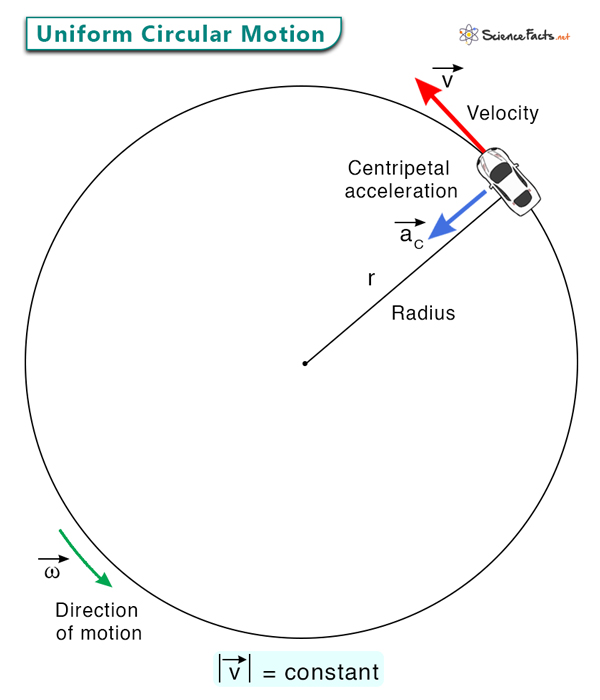An object prescribing a circular path has a well-defined velocity with magnitude and direction. Uniform circular motion is a specific case in which the velocity remains constant in magnitude (speed) but not direction. The direction is tangential to the circle and changes as the object changes its position, resulting in acceleration. This acceleration is called centripetal acceleration. It is directed inward, radially toward the center of the circle. An object moving in a circle is subjected to a net force. The net force is directed inward; otherwise, the object will move straight. This force is called centripetal force. It is responsible for keeping the object in its circular path. Like the centripetal acceleration, the centripetal force is directed toward the center of the circular path. This direction is always perpendicular to the velocity.
Examples
Equation
Nonuniform Circular Motion
Example Problems
The second, minute, and hour arms of a clockArtificial satellites revolving around the EarthBlades of a windmill
v = 2πr/T A similar equation relates the magnitude of the acceleration to the linear velocity. aC = 2πv/T Combining these two equations gives ac = v2/r Also, the relationship between the linear and angular velocity ω is as follows. v = ωr The centripetal acceleration becomes ac = ω2r Even if the linear velocity is constant, the object still has acceleration. It is unlikely to happen in linear kinematics, where a constantly moving object has zero acceleration. When the centripetal acceleration is multiplied by the mass, we get the centripetal force FC. FC = mv2/r = mω2r Solution Given m = 2.5 kg, r = 1.2 m, and mMax = 25 kg We can calculate the maximum tension FMax of the string by assuming a mass of 25 kg attached to the string and rotating vertically. In this case, the acceleration is due to gravity. FMax = mMax x g => FMax = 25 kg x 9.81 m/s2 = 245.25 N We can calculate the maximum velocity vmax from the centripetal force equation. FMax = mv2Max/r => v2Max = FMax x r/m => vMax = √245.25 N x 1.2 m/2.5 kg = 10.85 m/s

